Caves 🢔 Geological wonders 🢔 Categories of wonders
Wonder
Hranice Abyss (Hranicka Propast)
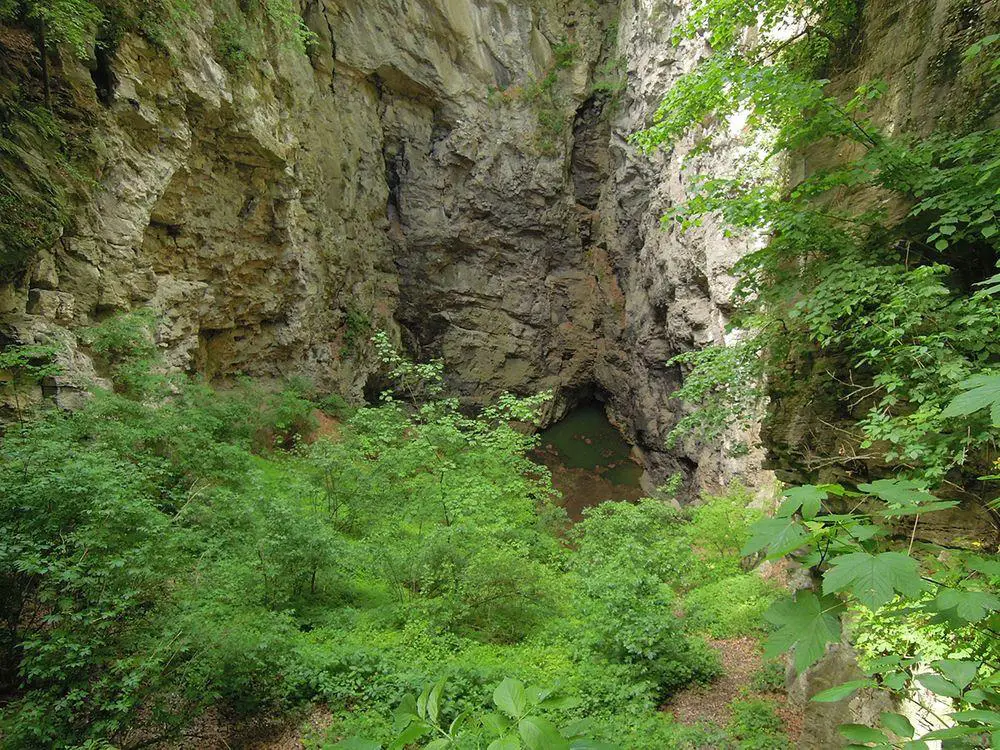
 In short
In short
The impressive sinkhole near Hranice town – Hranice Abyss – has been known for centuries. But over the last decade it turns out that this is a landmark of world importance – the small lake at its base is the deepest cave lake in the world!
 45.5%
45.5%
GPS coordinates
Location, address
Name in Czech
Depth
Depth of sinkhole
Map of the site
If you see this after your page is loaded completely, leafletJS files are missing.
 In detail
In detail
Description
The sinkhole is located in nature reserve "Hůrka u Hranic" and is accessible by a marked trail.
This giant abyss is visually very impressive and might be dangerous if the visitor steps too far. The hole is 104 by 34 m wide and its depth until the lake is 69.5 m deep. This upper part of the cave is collapsed cave room.
Lake at the base of the sinkhole (named Jezírko) does not look like something special. This small water body is covered with fallen leaves, branches, and other debris. Nevertheless, it is unique – it is incredibly deep!
On the 27th of September 2016 this lake was dived up to the depth of 404 m thus turning it into the deepest known cave lake in the world. But this is not all: there is a hypothesis, based on some geophysical research, measurements of temperature, and chemical composition, that the total depth of this cave is approximately 1 000 m! The discussion about this hypothesis is on-going (3, 4).
The cave lake consists of several enormous, vertical chambers which are connected by narrow passages.
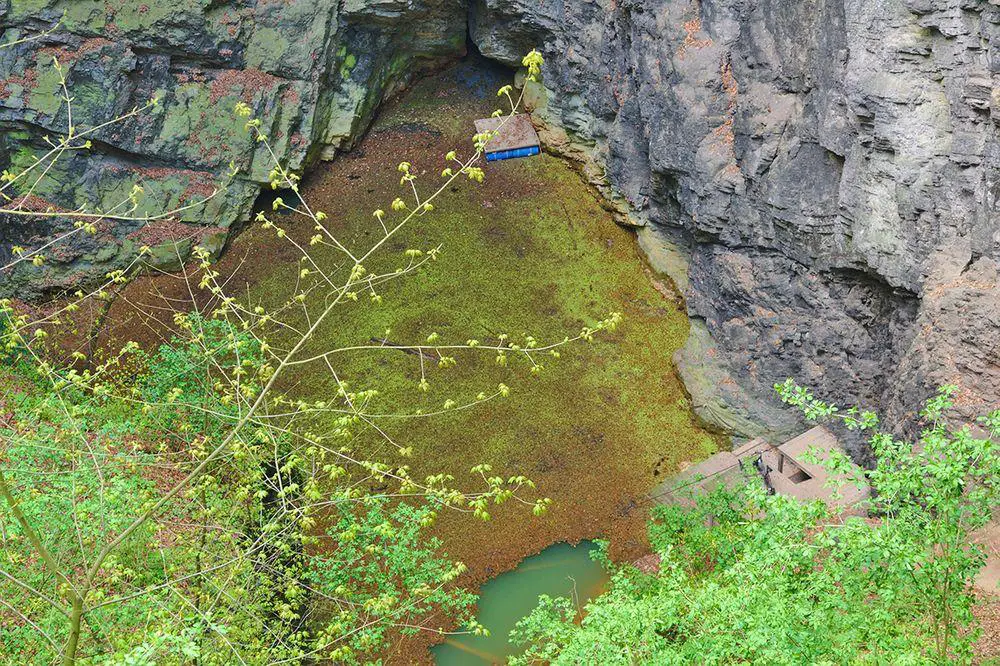
Geology
The area around Hranice town has many interesting karst formations – caves and quite many sinkholes. In the Devonian limestone have developed beautiful landmarks, such as Zbrašovské aragonite caves.
Hranice Abyss though is a very special landmark. The upper rim of this cave is located 315 m above sea level, which means that the cave goes deep under sea level.
This abyss has not been formed by the common karst processes, where the limestone is dissolved by groundwater which flows down through the fissures. Here, in Hranice Abyss the cave is dissolved by thermal water and carbon dioxide bubbles in it. These bubbles rise upwards, like in champagne. This carbonated water comes up from great depth, on its way to dissolving large voids in the limestone. This is thermal water with a temperature of 16.5 °C.
The carbonated water is felt also by the divers – it makes the skin itch.
History
The giant pit at Bečva River has been known for a long time. This is the deepest abyss in Czechia.
According to local legends here with his horse jumped the ruler of Great Moravia Mojmír II (or Mojmír I). In the same night, his entourage followed him into the abyss.
Since medieval times people have tried to measure the depth of the lake in the abyss. Step by step researchers dived deeper and deeper. In 1968 was reached a depth of 88 m, in 1980 – 260 m. Due to complex passages, the further dive required the development of new technologies – small robotic submarines.
Diverse submarines were tested here since the 1980ies and over the last decade most successful have been Polish-made (GRALmarine) robots. Such dives are extremely complex and require much skill and luck.
World’s deepest cave dive was made here on the 27th of September 2016 by a joint Polish-Czech expedition which was led by Polish diver Krzysztof Starnawski. They managed to reach the depth of 404 m, divers themselves reached the depth of some 200 m. The robotic device could not go further down as the cable for it was too short.
Thus by 12 meters was exceeded the previous cave dive record – 392 m in Pozzo del Merro, Italy, which was reached in 2002.
References
- National Geographic. Exclusive: Deepest Underwater Cave Discovered. Accessed on October 1, 2016
- ZO ČSS 7-02 Hranický kras. Accessed on October 1, 2016
- Radek Klanica, Jaroslav Kadlec, Petr Tábořík, Jan Mrlina, Jan Valenta, Světlana Kováčiková, Graham J. Hill. Hypogenic Versus Epigenic Origin of Deep Underwater Caves Illustrated by the Hranice Abyss (Czech Republic) — The World’s Deepest Freshwater Cave. Journal of Geophysical Research: Earth Surface, Volume 125, Issue 9, September 2020. Accessed on February 8, 2022
- O. Bábek, J. Faimon, M. Geršl, O. Sracek. Can the Hranice Abyss, the Deepest Underwater Cave in the World, Really Reach 1 km Depth? A Comment on the Paper by Klanica et al. (2020). Journal of Geophysical Research: Earth Surface, Volume 126, Issue 4, April 2021. Accessed on February 8, 2022
 Linked articles
Linked articles
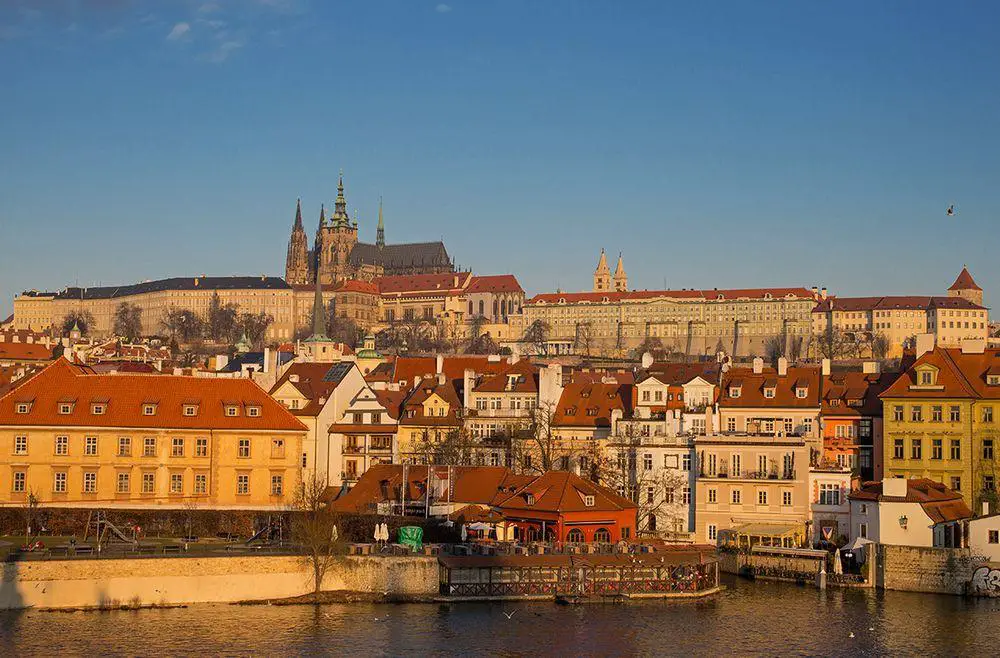
Wonders of Czechia
The heritage of Czechia is very diverse and especially rich and diverse is man-made heritage – from archaeological landmarks to the achievements of modern architecture. Among the numerous amazing landmarks, the most interesting here are historical cities and towns, castles, and churches.
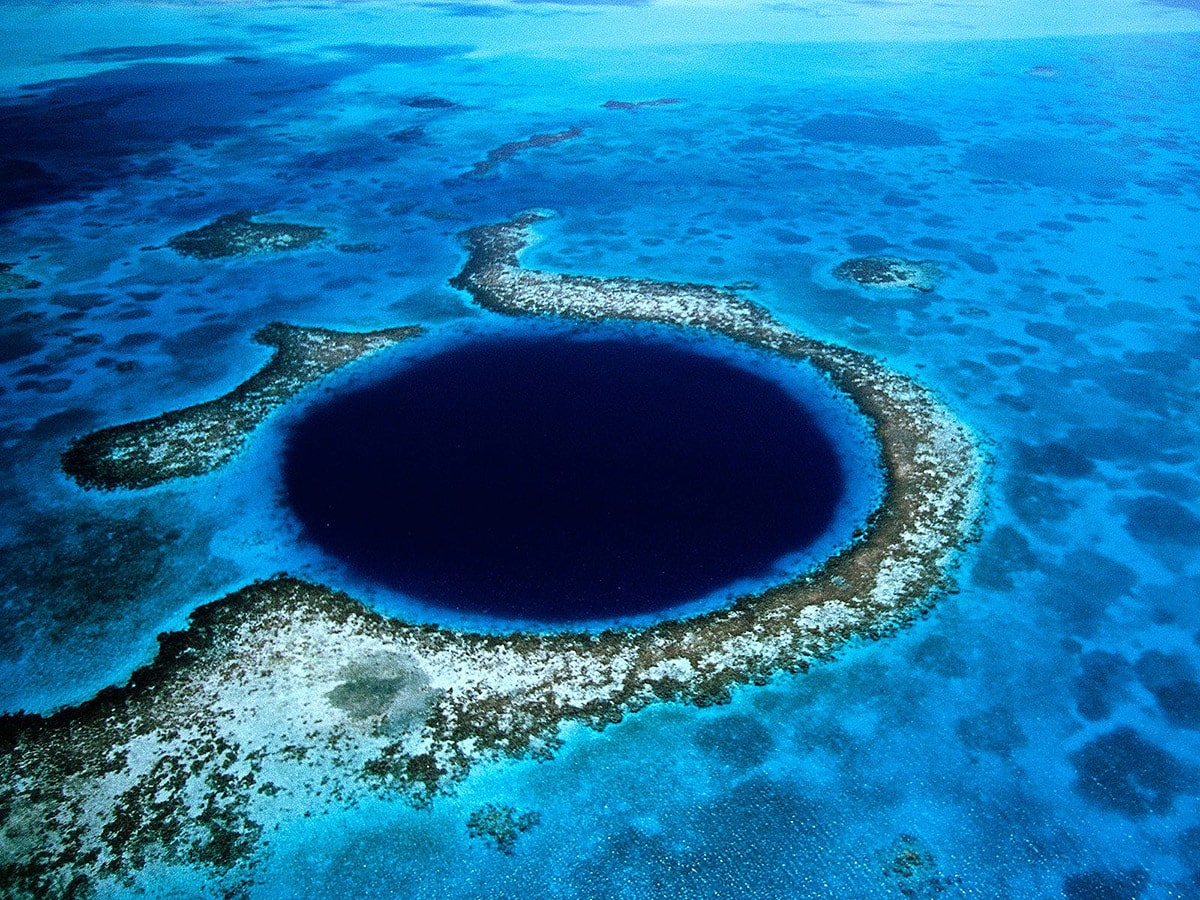
Sinkholes
This category includes outstanding sinkholes – large natural depressions or holes, which for most the part represent collapsed caves.
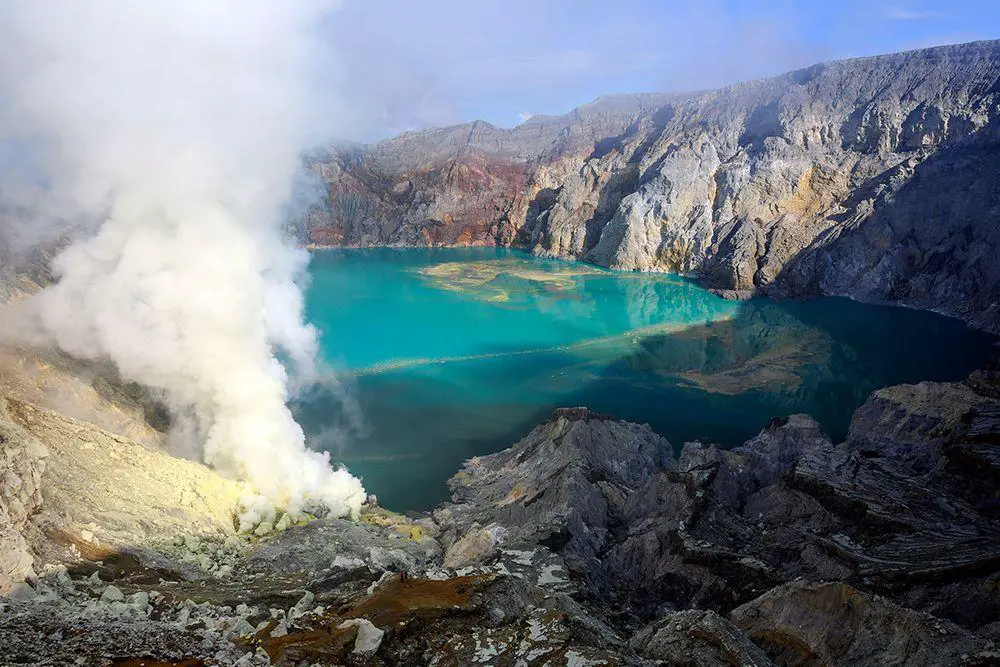
Lakes and streams
There are many factors that can make lakes, sea bays, or rivers unusual. Some lakes have unusual chemical properties and even do not contain water at all – such as lava lakes. Others may have unusual animals living in them or… legends about such animals.
 Recommended books
Recommended books
100 of the Deepest Caves In the World
Are you looking for a journey that will take you through 100 of the Deepest Caves In the World, along with funny comments and a word puzzle? Then this book is for you. Whether you are looking at this book for curiosity, choices, options, or just for fun; this book fits any criteria.


